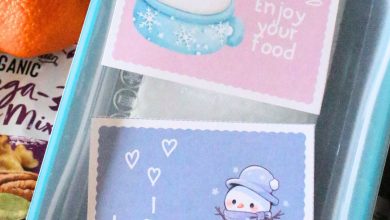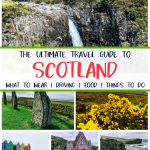
Scotland Travel Guide
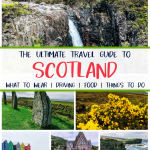

If you’re looking for a Scotland Travel Guide that will cover all the questions you could think to ask about money, food, driving, things to do, what to wear and more, you’ve come to the right place!
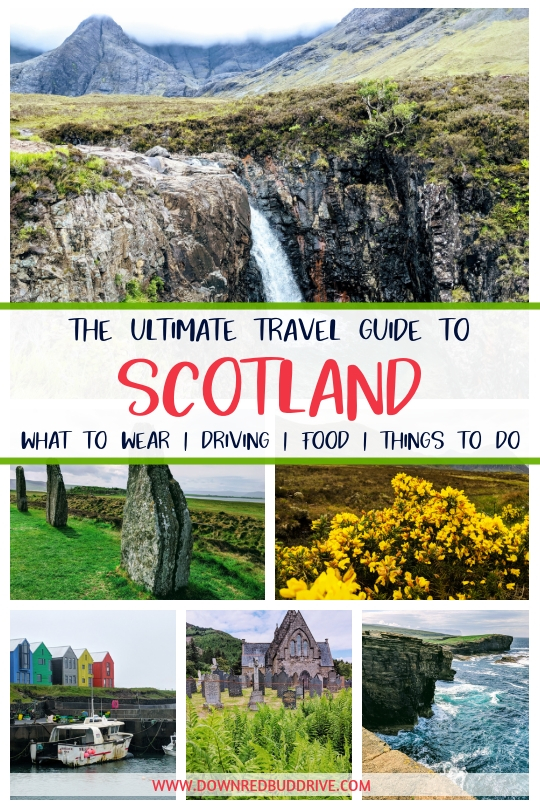

This post may contain affiliate links. See my full disclosure policy HERE.
Scotland Travel Guide
Before I took my first trip to Scotland, I (like most of you I’m sure) had a thousand questions. When you go to another country for the first time, it always feels like you have a hundred unanswered questions, and sometimes aren’t even sure which questions to ask.
The purpose of this Scotland Travel Guide is to put your mind at ease and to answer as many questions as I can based on my experience, so you can be prepared. If you have more questions after reading this Scotland Travel Guide, feel free to comment and I’ll answer to the best of my ability.
How far in advance do I need to plan?
This is a question that a lot of people ask, and I want to make sure it’s covered in this Scotland Travel Guide, because the answer is hard to find. My tip? Plan out your basic itinerary first, and then when you go to book lodging, activities, or transportation, you can do it all as soon as possible.
That being said, most flights only have a one year calendar. Meaning if it’s June 6th, 2020, you will only be able to see flights as far as June 5th, 2021. Lodging with hotels can generally be booked farther in advance than a year, but I don’t advise booking lodging before you book a plane. Scroll down to my transportation and my lodging sections to get exact timetables for each type.
My Scotland Travel Guide rule of thumb? Have your itinerary planned, and be ready to book, with cash (or card) in hand, just about everything 6-9 months in advance.
Transportation
There are a lot of different ways to get around Scotland, depending on where you want to go and how you’re comfortable doing it. There are planes, ferries, buses, taxis, rental cars, trains and more! Read each section to see which options you will need, and how to have the most success using them.
Car Rental and Driving in Scotland
I am writing an entire post on driving in Scotland, because there’s too much for me to cover here, and I want to be thorough. I will give you the basics you need to know here, and then when the other post is written I’ll link it here as well for a more detailed approach.
What kind of car should I rent?
You don’t need a four wheel drive. We drove all over Scotland and never once came across something even remotely close to needing four wheel drive.
Get an automatic car. Even if you can drive a manual, you should get an automatic, and many places will tell you this. The reason is that not only are you driving on the left side of the road, but you’re also sitting on the right side of the car to drive. This means that the stick to shift will be on your left hand side. It’s hard enough learning to do everything in reverse, much less trying to get your left hand to cooperate as well.
How far in advance should I book a car?
My Scotland Travel Guide advice? As soon as your itinerary is done, and your plane tickets are booked, get your car rental booked. Scotland is not a large place, and there are only so many cars available (especially automatics) so get your car rented at minimum, 6 months in advance. Arnold Car Rental is a good choice in Scotland. Don’t use Eurocar.
How hard is it to drive in Scotland?
It’s really not. Most of the time speed limits are between 20-30 MPH. So everyone is going slow. If you’re used to round abouts, it will be even easier. Signs are pretty easy to understand, but I’ll cover more of that in my driving in Scotland post. Just take it slow, read the signs, and you’ll be fine!
How are the roads in Scotland?
Interstates are rare in Scotland. Speed limits are usually 70 MPH on those, but you generally won’t use them. Always choose the pretty route over the speedy route, it’s worth it a thousand times over. Get this in your head now: nothing is fast in Scotland. Everyone moves slowly there, so don’t be in a hurry.
Other than that, roads are generally in great condition. Most of the roads we used were two lane highways. There weren’t a lot of places to pass, so easy does it. One lane roads are very common in small towns in Scotland. These roads only have enough room for one car, period. They have passing zones sometimes that have room for ONE CAR to pull in to let the other pass. Don’t tail someone else, because there’s not room for that. Oh, and watch for sheep.
Planes
There aren’t a lot of airports in Scotland. The two main airports are in Edinburgh and Glasgow. We flew into Edinburgh more than once. Even the big airports aren’t “big” airports like we’re used to in the US.
There are several smaller airports around Scotland. Did you know the shortest commercial flight in the world is in Scotland? It’s scheduled to take seven minutes, but really only takes two minutes. Pilots say with the right wind they can do it in under a minute! The flight is between Westray and Papa Westray on the Orkney Islands.
My best Scotland Travel Guide tip to save money and get the cheapest round trip tickets is by using Google Flights. Go into to Google Flights, select the number of passengers, dates, and locations you want to fly, then toggle the switch that says “track this flight”. Every time the prices go up or down on the flight it will email you giving you a heads up.
I set an alert for our travel dates in August or September, and finally got an alert in November that prices had dropped by more than half. Originally, the tickets were going to cost $2700 round trip for two people, but ended up only costing $1200 round trip – well really they were free. We got an amazing travel credit card to start using for all our normal spending purchases like groceries, gas, utility bills etc so we could use the points to save on travel. We’d only had the card for 8 months and were able to use our points to get $1200 worth of tickets for free! Best decision we ever made was getting that card! (If you want to see about getting it, you canclick here.This isn’t a sponsored post, and they didn’t pay me to say any of that, I just have people ask how we’re able to travel so much all the time, so I’m sharing with you what I tell them!)
For reference, our trip was scheduled for the end of May 2019, and I bought tickets in the middle of November, 2018. That should give you a general timeline for when to start looking for your plane tickets.
Ferries
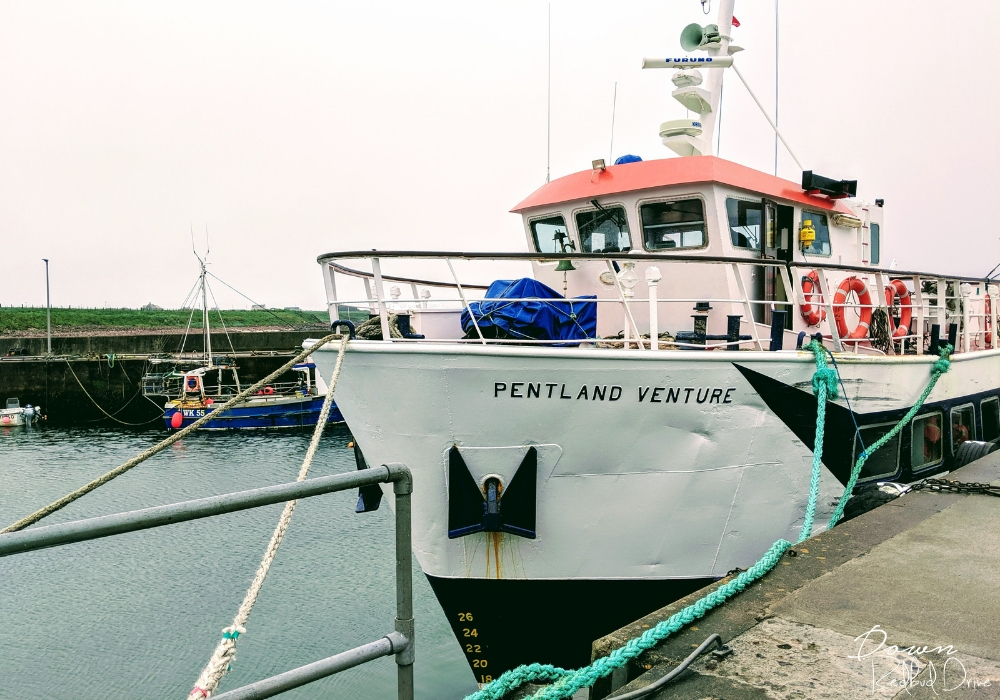

One of my biggest disappointments about the trip I took, was missing out on a crucial ferry ride because I took too long to buy tickets. Once you know your itinerary, and have your plane tickets and lodging I can’t stress enough that you need to buy all the transportation tickets ASAP.
To replace the ONE ferry I didn’t get to book, we had to rent a car, take a train, take a taxi, take a shorter ferry, take a bus, and take a plane. If I had been able to book the ferry, it would have been one ferry there, one ferry back.
You can find ferries all over Scotland in varying sizes and on varying schedules. The best way to find ferries for outer laying isles and islands, is to do a Google search for “ferry to Isle of Arran” or whatever location you’re wanting to go, and then choose which departure city will best suit your travel plans. They have ferries that are big enough to take your car or bike across with you, but verify that before booking if that’s what you need.
Some ferries are tiny and can only hold about 50 people, while others can hold hundreds. Keep in mind that ferry travel times can vary because they’re dependent on the wind and sea conditions as well.
Trains
Trains are the most beautiful way to see Scotland outside of renting a car. They’re cheap, but they take longer than driving would. However, you will get to see some of the most beautiful scenery you’ve ever seen. You’ll drive by castles, ocean, houses older than America, moss covered forests, mountains, rivers, fields full of sheep and wildflowers and more.
Trains are also roomy. The train we took was basically empty, had free on-board wi-fi, charging stations for our phones, place to store our luggage, and was very comfortable. There are also on-board bathrooms as well.
You can generally book your train ticket three months in advance, depending on the company you’re using. Scotrail is the commonly used service there, so keep that in mind when booking. Arrive about 30 minutes before your train leaves to give yourself time to get digital tickets turned into paper ones, and to grab a coffee before you hop on if you want.
Buses
Buses in big cities are the cheap way to get around. For instance, in Edinburgh you can get a round trip ticket into town, and back to the airport (when you need to go back) for 7.50 pounds.
However, buses in small towns, like Wick, can be INCREDIBLY unreliable. We waited for over an hour for a bus that never came, and ended up having to take a taxi.
You pay for your bus ticket in person, generally. Have exact change, as many don’t take cards.
Taxis
Taxis are easy to come by in most cities in Scotland. When in doubt, google, “taxi near me” and it will give you a list of all the taxi services in the area. If you don’t have cash to pay with, ask on the phone BEFORE BOOKING to ensure they take card. Some do, most don’t.
Tipping isn’t as necessary there as it is here, but it’s still appreciated if your taxi driver was especially nice and did a good job. We learned a lot of things from taxi drivers while we were there!
Costs for taxis are high, as they are anywhere. In general, a short 5 minute of less drive will cost you about four pounds. A twenty minute drive across town can be as much as thirty pounds. If you’re limited on cash, ask when booking how much it would be to your destination.
Walking in Scotland
We did a LOT of walking in Scotland. Instead of paying eight pounds for a round trip into to town for dinner or shopping, we walked instead. This saved us a ton of money while we were there. Google has walking directions, and we utilized those a LOT.
Most towns and cities are VERY pedestrian friendly. Just use the old rule of thumb and look both ways before crossing the street, and you’ll be fine. Prepare to walk in the rain at some point, because it’s Scotland. If it starts to rain too hard, you can always duck into a store to let it pass for a moment.
Food in Scotland
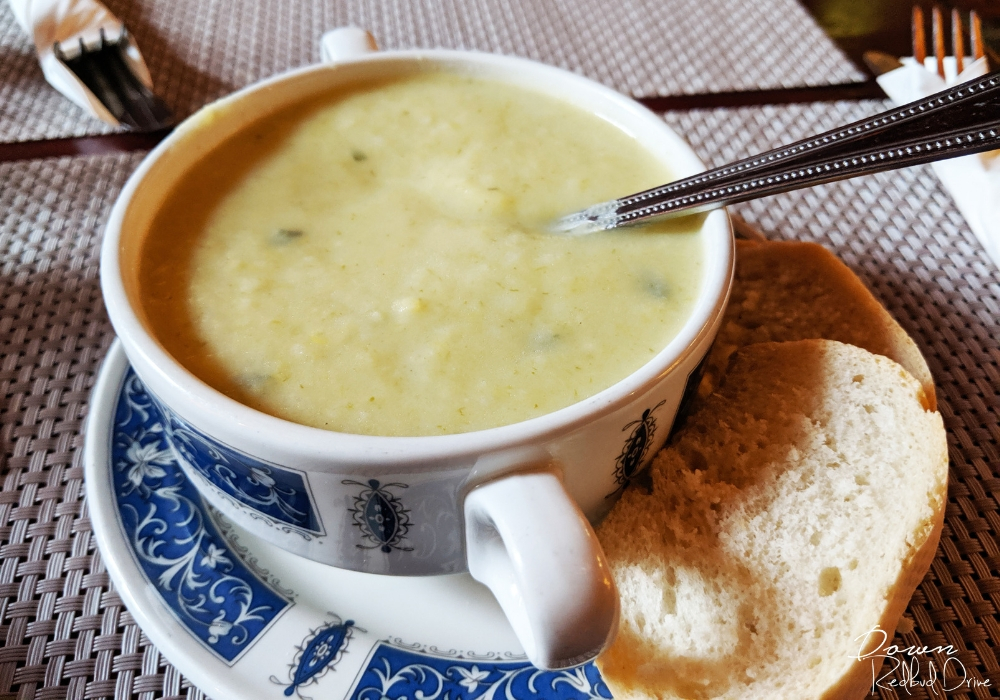

You can’t have a Scotland Travel Guide without talking about food. Food is my favorite part about travel. When you go to another country, there are always little nuances you don’t think about. I’m going to tell you all the little things you don’t even know to ask, so you can eat well while you’re in Scotland!
When to get food in Scotland
This seems like it would be easy. You get food at meal times, right? Not so fast there, buddy. If you’re used to eating in the US, things are going to seem weird when it comes to restaurants and eating out in Scotland.
Typically, you can find breakfast before 10 a.m. (if a restaurant serves it), lunch between Noon and 2:00 p.m. (if they serve it at all), and dinner between 5 p.m. – 8 p.m. It is very rare for you to find a restaurant that serves food all day, or after 8 p.m.
Making restaurant reservations
In Scotland, they call making a reservation, “booking a table.” As a general rule, you will need to book a table in advance (like a day or two before for normal restaurants, and maybe a few weeks before for high end restaurants) for every restaurant you visit. This includes pubs as well.
If you don’t make a reservation, and just try to pop in, you will likely be turned away. In the States, restaurants will get full, and then they will have a waiting area for when a table comes available. They don’t do that in Scotland. Once a restaurant’s tables are full, they will just tell you they’re full.
Where to eat in Scotland
One of my favorite things to talk about is food. Since I’m writing this (very long) Scotland Travel Guide, I wanted to make sure you knew where and how to find the best food while you’re there.
We really didn’t ever find bad food while in Scotland, except for this one little place on Orkney Islands that was trying to do American food (we didn’t want American food, we were just hungry and desperate). That being said, look for a pub or a hotel. Those are the most common places to find food in Scotland. There aren’t a lot of places that are *just* restaurants, most of them are also in a hotel or a pub.
Ask the locals where the best places to eat are. We stayed in a lot of Airbnbs while we were there (I’ll talk more about that below in the lodging section) and we found the best food by asking our hosts where we should eat.
Eat local dishes. Don’t get a burger or chicken goujons (chicken nuggets) every time you eat at a restaurant in Scotland. Try the haggis (really it just tastes like a well seasoned meatloaf), neeps and tatties, which is Scotland’s national dish. It’s haggis with mashed potatoes and mashed turnips. Try leek and tatties soup. Try the fish and chips. Try steak and ale pie. Try potato scones (you’re gonna thank me for this one), and black pudding, and fried bread. Eat the scones, the tablet (kind of like fudge), and the shortbread and EXPERIENCE Scotland’s flavors for yourself. Eat some “safe meals” to give your pallet a break, but immerse yourself in the culture to appreciate it!
Another thing you should know before going, is that restaurants don’t give refills on drinks. If you want a refill, you need to ask for another cup of whatever you’re drinking. And when you’re ready for your check, you need to ask for it. Scotland isn’t in a hurry, so they won’t rush you by bringing your check before you’re ready to pay.


If you can find a Farmhouse Inn restaurant (they all have different names) and carvery, eat at one. They have the biggest portions of amazing food and cake I’ve ever seen for incredible prices.
Tipping
As I said earlier, tipping isn’t necessary in Scotland. Tips are usually included with your bill. We found THE most polite and courteous serves while we were in Europe, and it was so refreshing! Tip if you get extra good service, but it’s not anticipated or necessary like it is in the States.
Lodging in Scotland
Scotland is centuries old, but the population is actually quite small. That being said, there aren’t a lot of hotels. As a result of that, lodging books very quickly in Scotland, especially during peak travel times. After you get plane tickets purchased, you need to immediately start researching and booking your lodging.
Hotels
As I just stated, you aren’t going to find many hotels like you’re used to in the States. You can generally find them near airports, and in larger cities.
Bed & Breakfasts
You will find all of Scotland LITTERED with Bed & Breakfasts. This is the most popular way to stay in Scotland, and a great way to get breakfast in the morning before you start your day as well. Bed & Breakfasts tend to be a little more communal in nature, meaning you will eat and socialize with the hosts and other guests regularly.
Airbnb
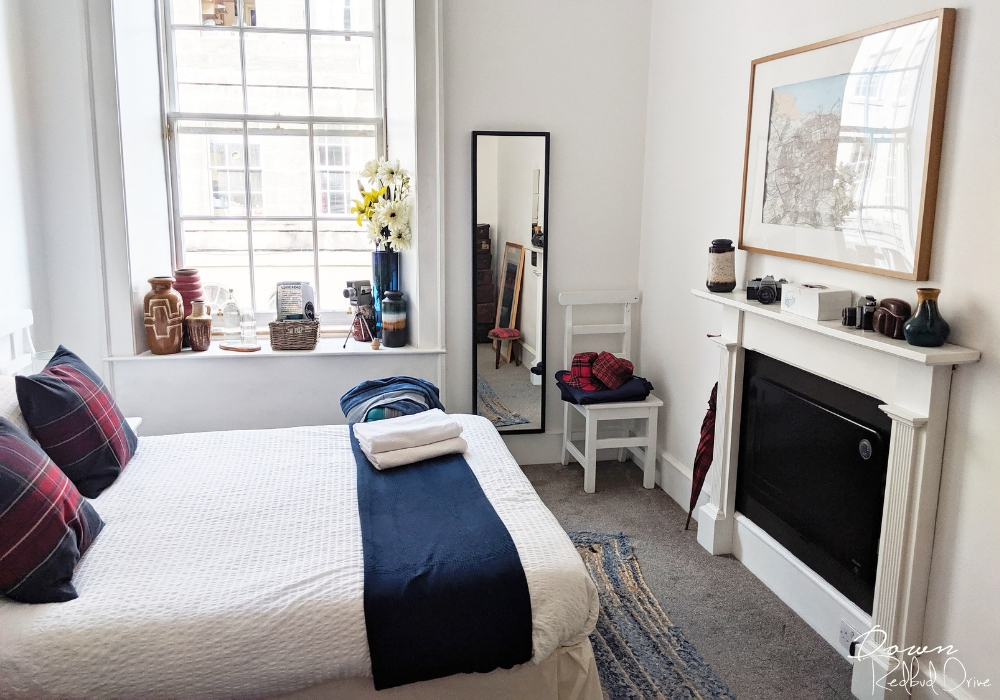

This is the cheapest and most culturally immersive way to experience Scotland, in my opinion. Airbnbs are usually people’s homes. You can rent a room (or sometimes an entire apartment or condo) from someone. Basically, we paid people to stay in their guest room.
We searched for Airbnb “Superhosts” which means they have been hosting for a certain amount of time and have a certain number of five star reviews. The people we met by doing this were wonderful! We were able to see things, and eat places we never would have found if not for their suggestions and direction.
I highly recommend using Airbnb if you want great, affordable lodging. Some of the places we stayed were as cheap at $40/night and that included breakfast! Click HERE to use my referral link, and get 15% off your first booked stay. SO glad we used this instead of just staying in a hotel!
Castles
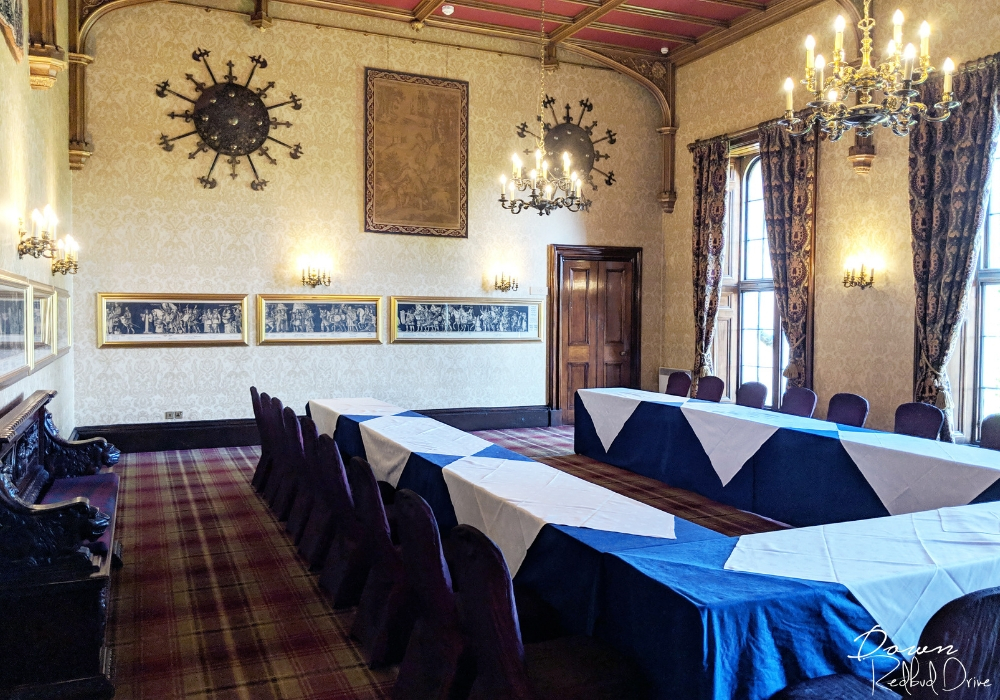

Scotland has a LOT of castles you can stay in. Many of them have been restored and modernized on the inside so you can only tell their old buildings from the outside. Others, like the one we stayed at in Edinburgh called Dalhousie Castle maintains a gorgeous outside, while keeping much of the integrity of the inside! They have even turned the dungeon into a fine dining restaurant (which is incredible).
If you want to find castles you can rent in their entirety, or just a room for a night, you can check HERE.
What to do in Scotland
This Scotland Travel Guide could get pages and pages long if I detailed all there are to do in Scotland. I will touch on some of my favorite things, and then let you explore on your own to find some more specific things to do in Scotland.
Hiking in Scotland
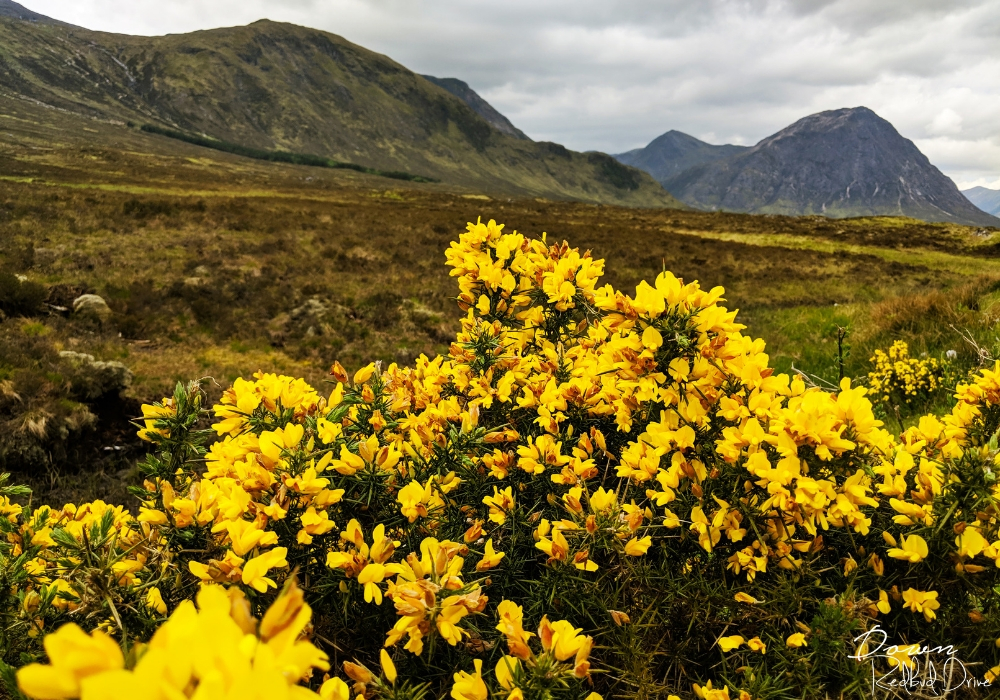

The beauty of Scotland is more profound than I can type or show you in pictures. There’s so much land in Scotland that’s left untouched by human hand, leaving God’s glory on display at every turn.
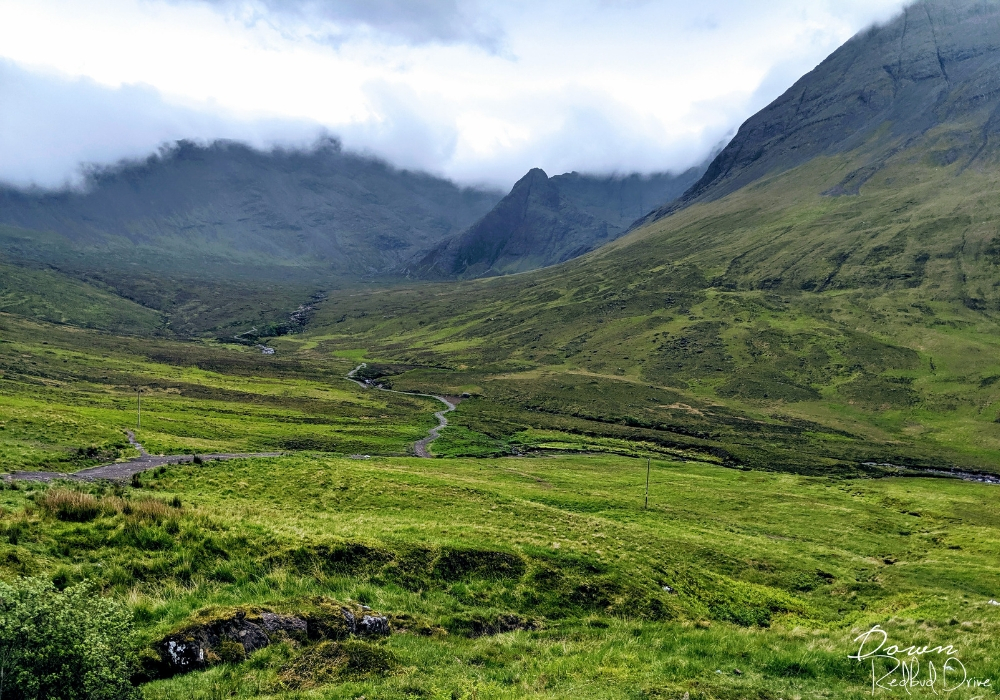

Hiking is by far my favorite thing to do in Scotland. Breathing in the mountain air, and the sweet scent of the flowers is tranquility at its finest. Hikes can be as simple as walking through a field or on a rocky path, or as difficult as climbing a steep mountain, or trekking into a deep and narrow valley.
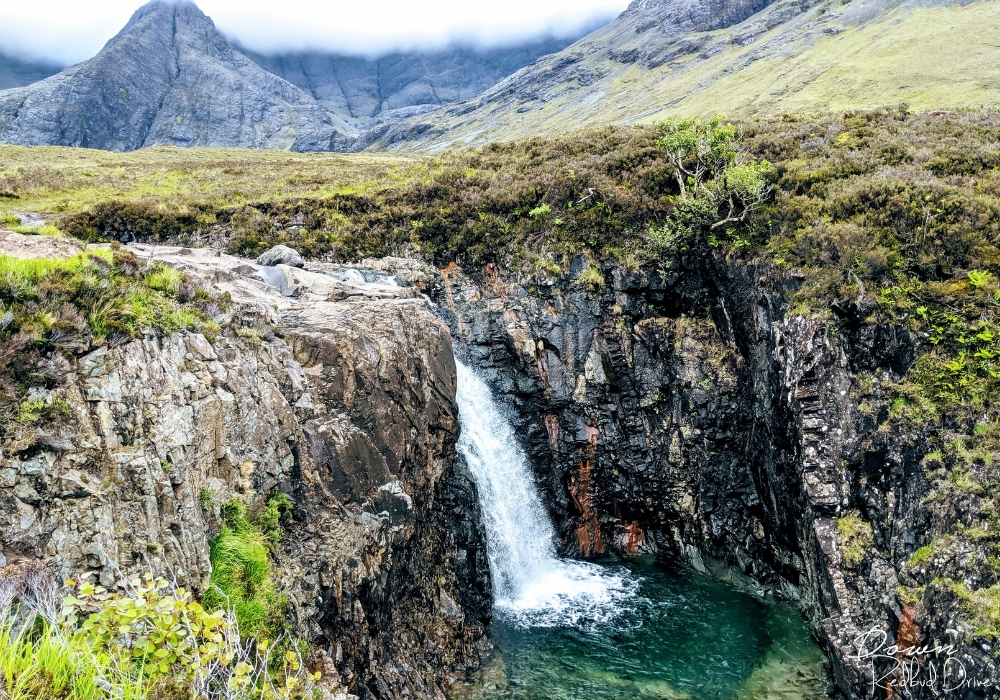

Go see the Fairy Pools on the Isle of Skye. They have a lot of hype, for a very good reason. I have never felt more in awe of nature, and realized how small I am, until I stood at the base of three mountains being kissed by low hanging broody clouds, covered in the brightest green grass you’ve ever seen, with deep blue waterfalls surrounding me on every side. The entire hike is 14 miles, but you can go about 2 miles in and then turn around if you want to keep it short. My tip? Go early in the morning at about 8 or 9 to beat the crowds.
During the summer months, it’s daylight out for 18 hours a day, sometimes up to 24 hours a day depending on the time of year. Use this to your advantage and enjoy as much of the outdoors as you can! Ask locals for the best hiking spots, and just go.
Beaches
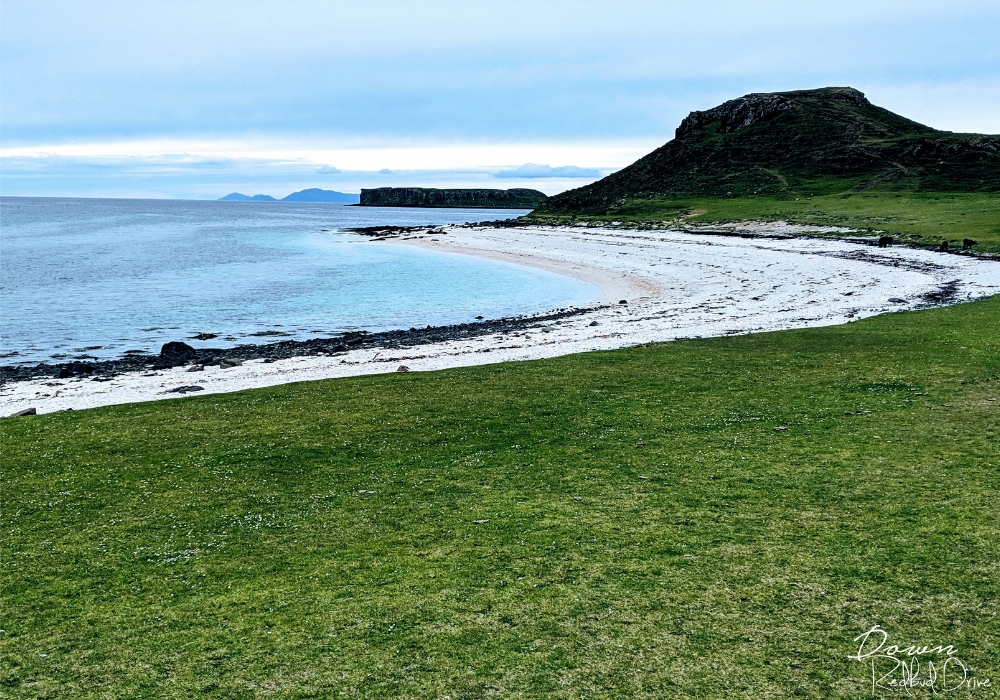

Scotland is actually home to some of the most beautiful white sand beaches with the bluest water you’ve ever seen! The problem is, it’s generally cold, so those beaches stay empty. They’re still gorgeous, so go explore them, and do some shell or sea glass collecting!
Mind the tide, and don’t get caught somewhere you can’t get away from. Some places on the isles and islands have entire islands that will disappear when the tide comes in. Travel smart, and ask or research before you just go beach walking.
Explore the History
Scotland is very old, and is FULL of history at every turn. On the Orkney Islands they have so much old (very old, as in older than the pyramids old) history under them that they can’t even afford to dig it all up. The locals say they’re so much history there, you can just scratch the surface and find it.
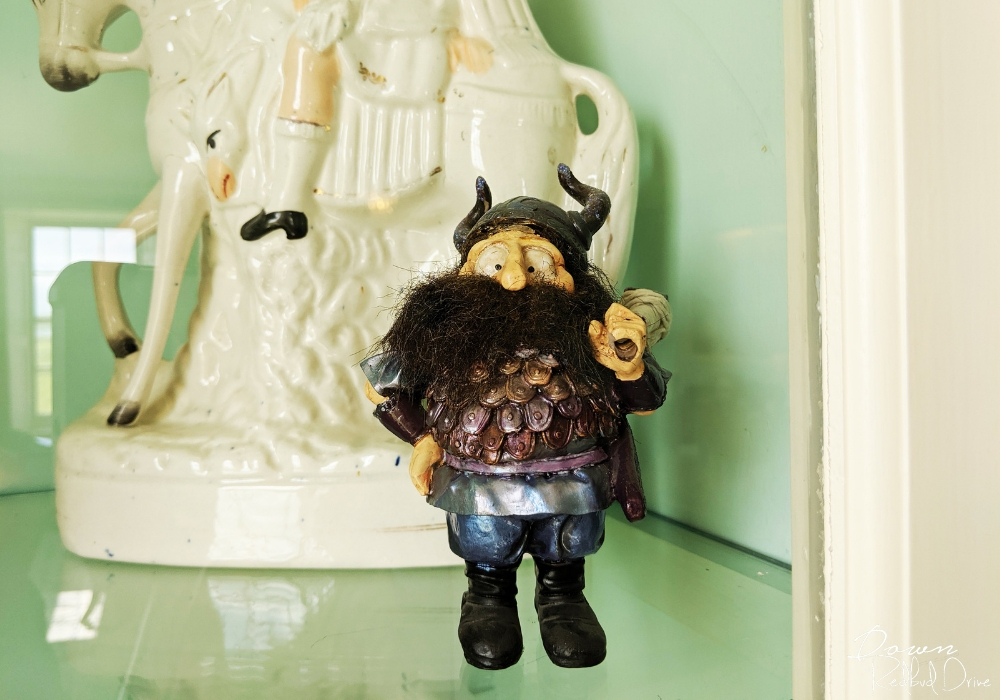

That being said, a lot of Scotland’s museums have free admission. Take advantage of this, and go. Soak in the history of the country around you! Most, if not all, of them are kid-friendly and have special scavenger hunts just for the kids (like the little viking guy above) so they stay amused too.
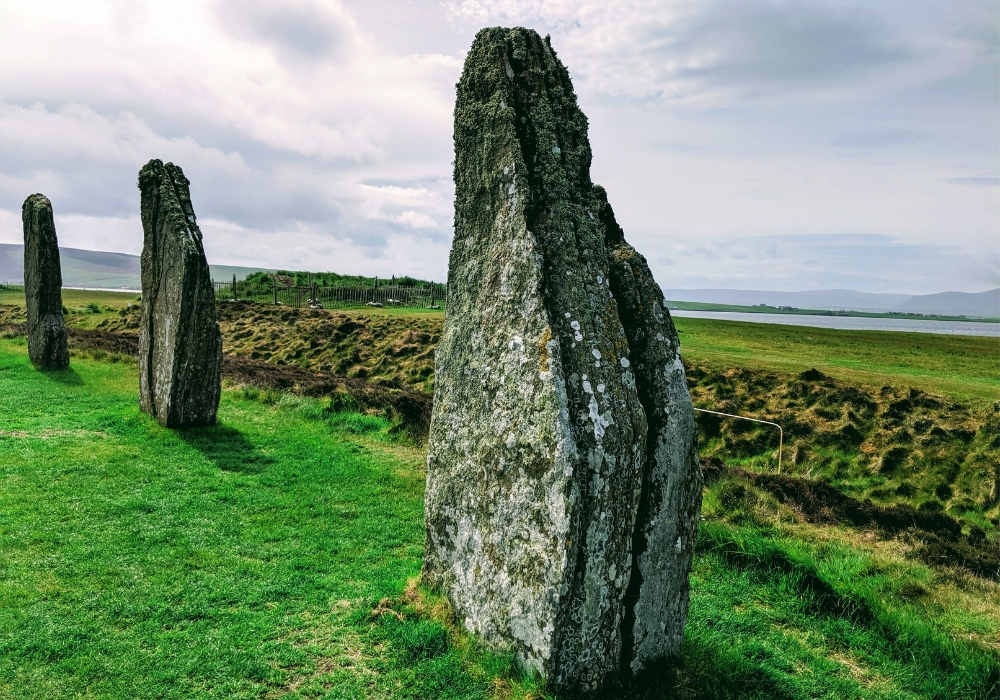

Go to Orkney Islands and visit Skara Brae, the Stones of Stenness, Skaill House, and the Ring of Brodgar (pictured above). They are all very near each other in Stromness, but are absolutely full of the neatest, physical historical monuments I’ve ever seen. The best way to see Orkney Islands is with a guide. Don’t use one of those bus tours that are full of dozens of people and have you on a tight time limit, but do what we did and hire a private guide. I recommend using My Orkney Tours. Marlene was SO kind, and has lived her whole life on Orkney. She gave us more info and history than we ever would have gotten from a large tour company!
Castles litter the countryside, and many of them are open to the public. They’re incredible to explore and often contain a ton of history about their previous owners.
Shopping
The best shopping is sometimes found in the smallest of towns in Scotland. Lots and lots of people craft and sell goods, so it’s very easy to find homemade items!
General Shopping
For the best general shops, and a more retail experience, hit Edinburgh or Glasgow. They have a ton of stores with a big selection, and are easy to navigate.
Thrift Stores
Thrift Stores are called, “Charity Shops” in Scotland. They all benefit a charity of some sort, and you’ll find several in each city (even small cities).
Antique Stores
Antique stores, or “junk shops” as they’re sometimes called, can be found all over Scotland. This is my favorite way to shop, and I found some of the neatest things this way!
Best time to travel to Scotland
Everyone wants to know the best time to travel to Scotland. This all depends on what you want to do or experience while you’re here. The most agreeable weather will be in July and August.
August is the busiest time of year due to the The Royal Edinburgh Military Tattoo. It’s an incredible experience, but is absolutely packed, so keep that in mind when making your travel plans.
Christmas time is very cold, and littered with snow, but is absolutely beautiful in Scotland! Dress appropriately, and you’ll be fine.
What to wear in Scotland
This is THE most common question I see asked by first time travelers, me included. You can look ahead and see the weather for where you’re going on Google, but unless you’ve been there, you can’t really know what to pack.
Locals will tell you in from the end of May to the end of August that you can wear capris, t-shirts, and maybe bring a light jacket. Unless you live in a similar, northern, windy, coastal environment like Scotland, do NOT listen to that advice.
I’m from southern Missouri. Our summers are very hot, and our winters are pretty cold (we get below 0 F). That being said, the temps were supposed to be a high of the mid 50’s to low 60’s while we were in Scotland, so I assumed their advice was spot on.
The temps were what they said they were supposed to be, with lows in the 40s and highs in the mid 50’s, but it didn’t feel like that at all. I froze the entire time. I had to wear all three jackets I brought with me, leggings under my jeans, and a stocking hat and gloves I bought while I was there, and I was still cold.
Waterproof Clothing
A lot of locals will say you don’t need waterproof clothing, but I would absolutely disagree with that. I wore my waterproof Teva hiking shoes THE entire time I was there, and I was so happy to have dry feet all the time. Even if you’re not walking through puddles, or muddy terrain, it still rains almost daily there, so it’s good to be prepared. My husband and I both used Teva brand and didn’t have to break them in at all, and we walked or hiked more than 10 miles a day for 10 days in a row without issues. We found great deals on Amazon and saved like $70 on my husband’s shoes alone!
A lightweight, packable, waterproof hooded jacket (we got these on Amazon) was the other most valuable thing I brought with me besides the shoes. They took up no space in our luggage, and they were great to layer with and kept us dry with all the pop up showers and mist you find in Scotland.
Bring a backpack or two. We walked a lot, like I said earlier, and having a backpack to keep little things, or purchases in, was so helpful. We also kept extra jackets, or an umbrella in here as well. They’re also great for hiking and will keep your food safe for a picnic lunch etc. I bought a backpack that was designed to be a diaper bag, because it has a LOT of insulated pockets, an insulted bottle holder (that fits a bottle of water perfectly), and even has a spot for me to plug in my portable phone charger so I can charge my phone right on my backpack. Worth every single dime!
Midges
If you’re traveling to Scotland for the first time, or are planning on heading up in the summer months at all, you need to be aware of midges. I can’t write a Scotland Travel Guide without talking about the national pest: midges.
Midges are little, gnat-like bugs that bite like mosquitoes. They leave itchy little bites and fly in annoying swarms. Your best bet to combat these evil little monsters is a product called Smidge. It does the best job at repelling them and is deet-free. Buy it before you go on Amazon HERE, or get it when you get there.
Still have questions after reading this Scotland Travel Guide?
I hope this answered as many questions you may have about traveling to Scotland for the first time. If I forgot something, or didn’t cover something in as much detail as you’d like, feel free to ask any questions below!
Now that you have all the information you need to travel Scotland for the first time with this Scotland Travel Guide, when are you booking your trip?


